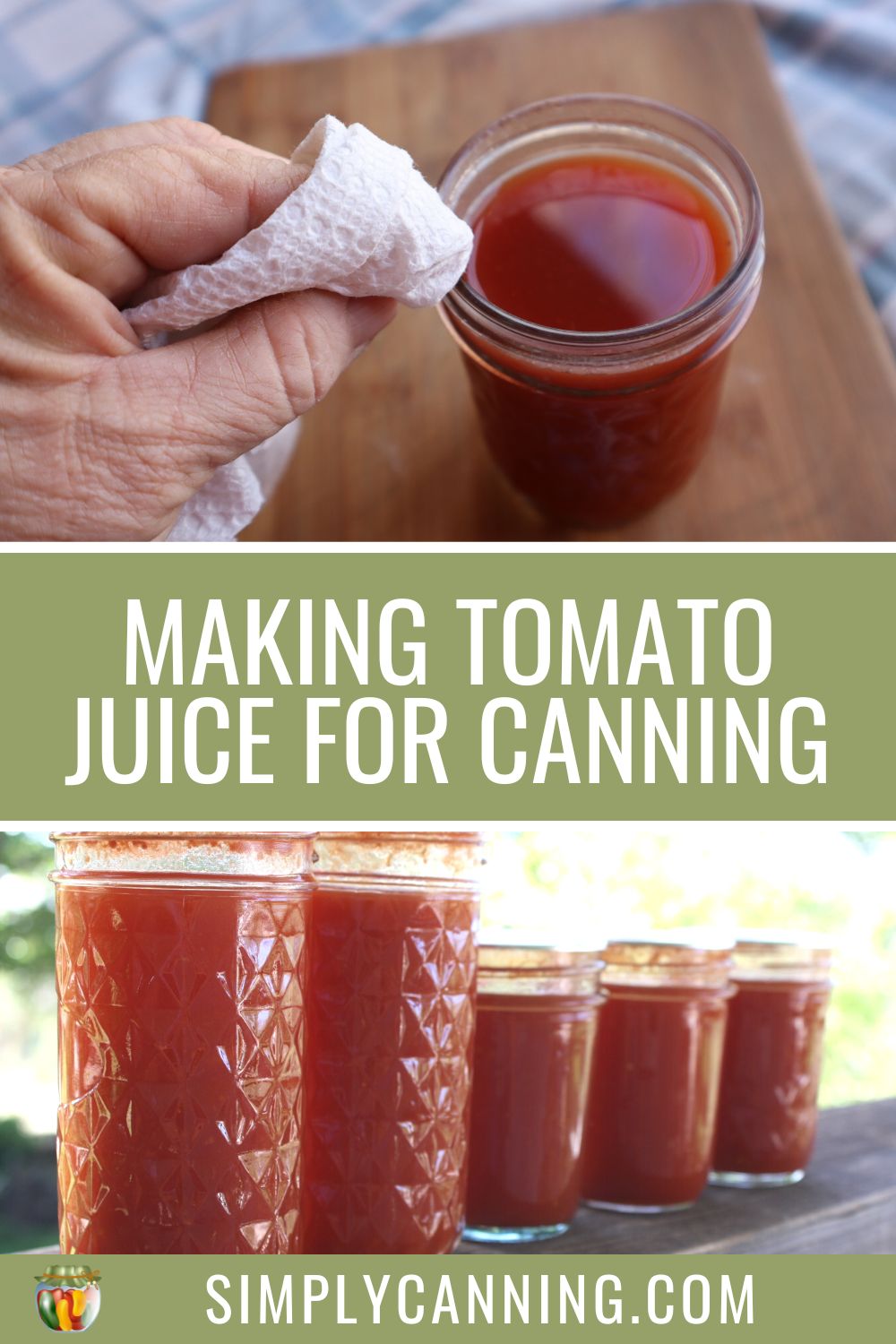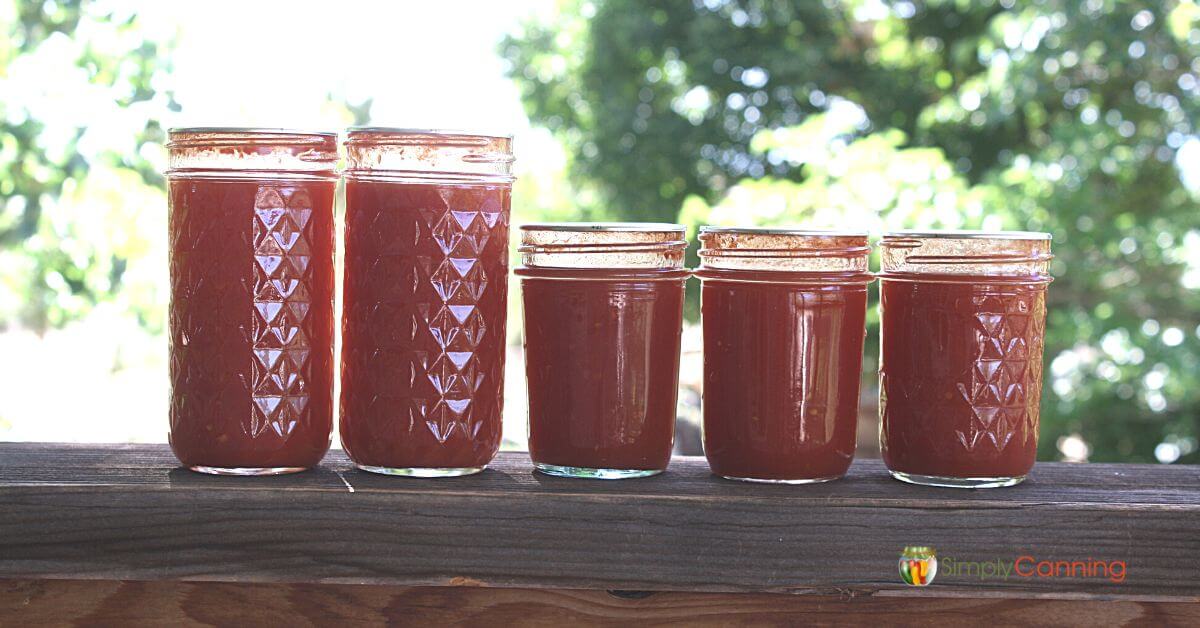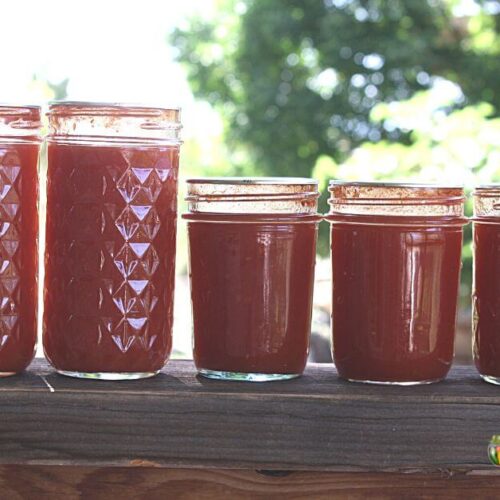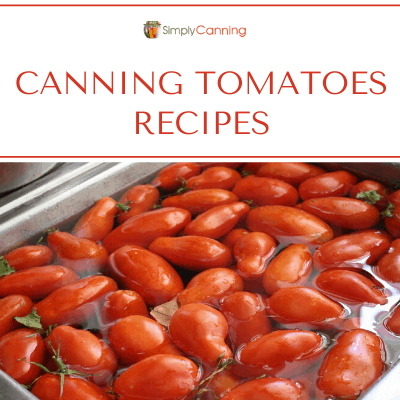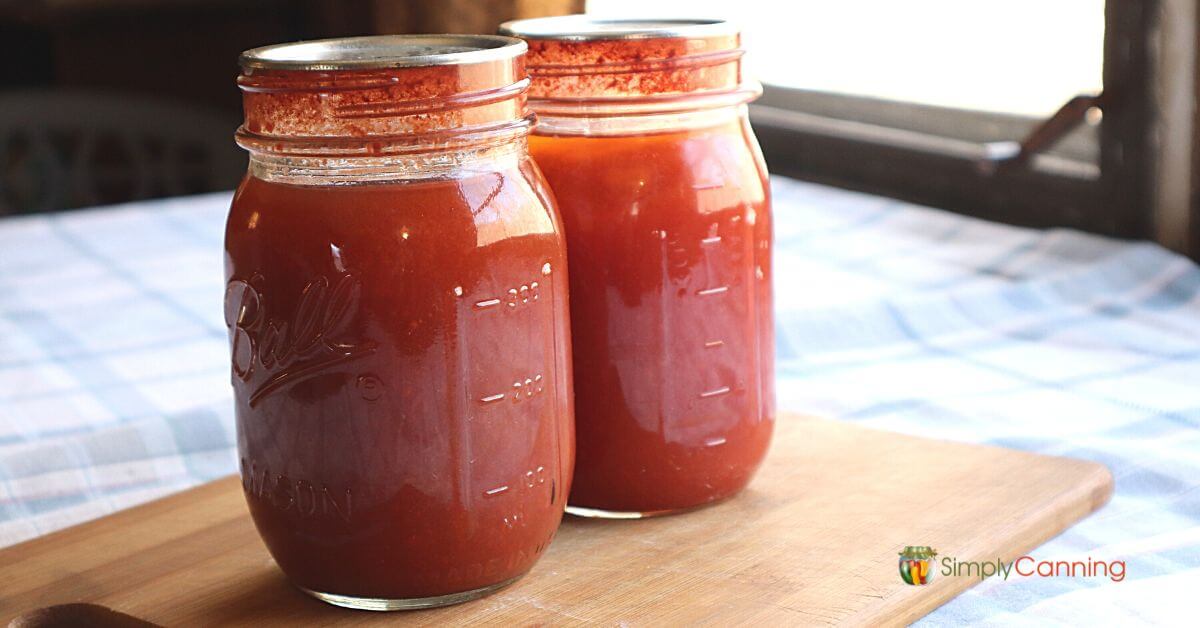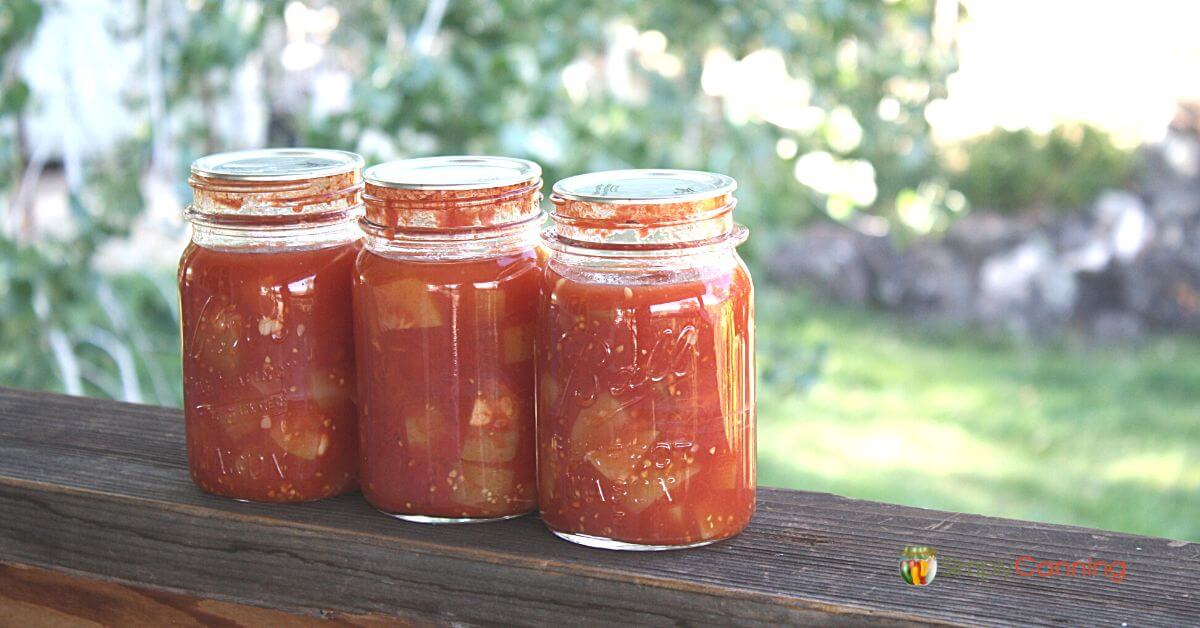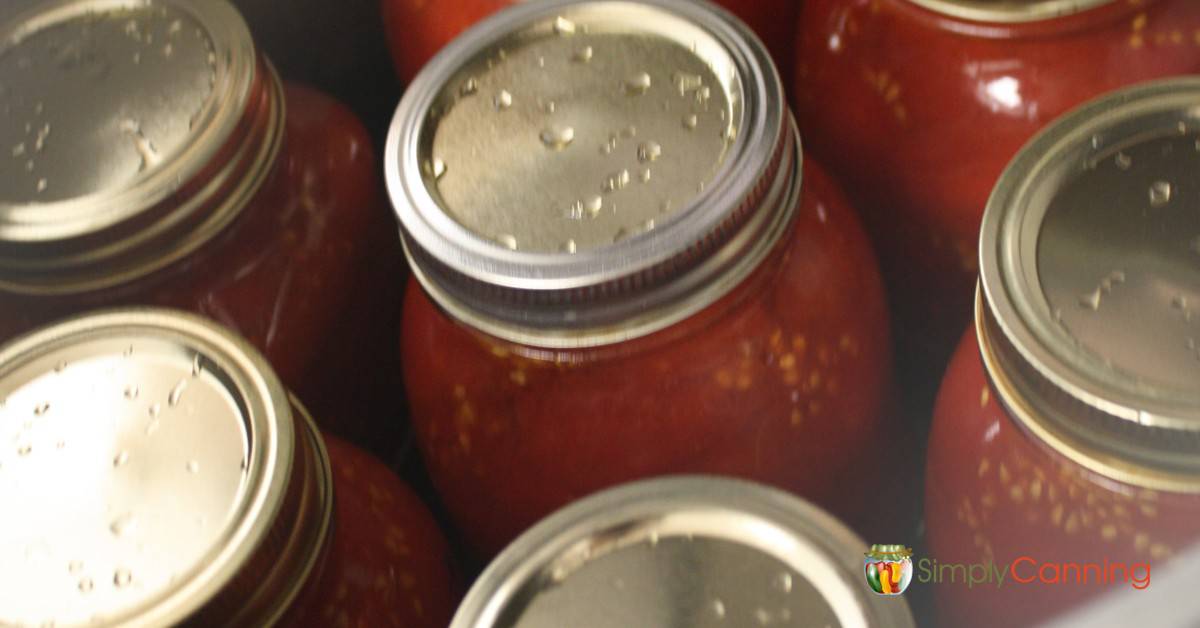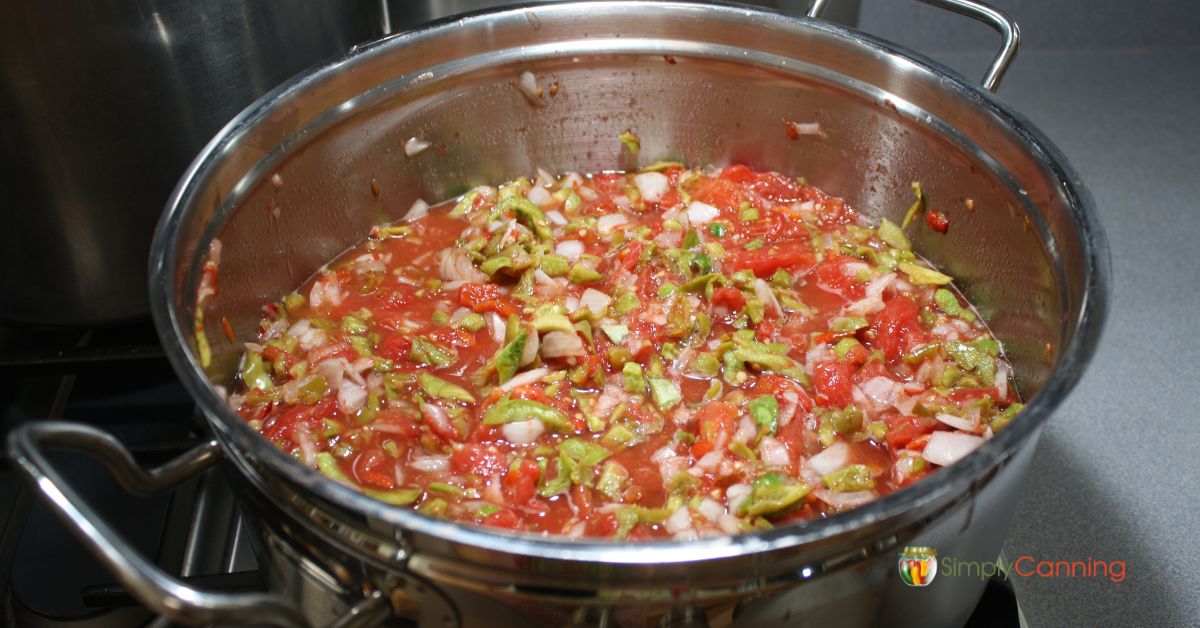Making Tomato Juice for Canning
This page may contain affiliate links. More Information.
Making tomato juice for canning is pretty simple really. Juice your tomatoes and remove the peels and seeds. There are however a few tricks to avoid the whole settling and separating of the juice and tomato pulp that sometimes happens.
Tomato juice can be canned in either a water bath or a pressure canner. It really is just personal preference as to which one you use.
Either works is tested and safe. Since it would get confusing to have all that information and instructions on one page I’ve separated them out for clarity.
The post that you are on is the recipe for making tomato juice for canning. This is a plain tomato juice with no vegetables.
How to can tomato juice.
This recipe is safe for home canning as the processing directions indicate. If you want to add vegetables to your juice and make a tomato vegetable blend you’ll need a different recipe. The processing instructions will be different.
Make your juice with this recipe. Then choose your processing method and jump over to that page.
The first step is making the tomato juice.
Basically this is done in 5 steps.
- First wash tomatoes. Just give them a good rinse in a colander.
- Then you’ll cut out the stems, and cut off any bruises or damaged portions.
- Cut them up into quarters, and bring to a boil in a large saucepan and simmer for 5 minutes.
- Remove the peels and seeds with a food mill.
- Reheat your juice and fill jars for processing.
I’ve covered some tips and hints below to avoid some common pitfalls and make this easy with great results.
What type of tomatoes work best.
Usually when I’m canning a tomato product I’ll recommend a meaty style tomato. Many are labeled ‘paste’ tomato. There is less juice in them. When you are making a product where you want it thicker you want it a bit thick so you don’t have to cook it down as long. Tomato sauce or salsa would be some examples.
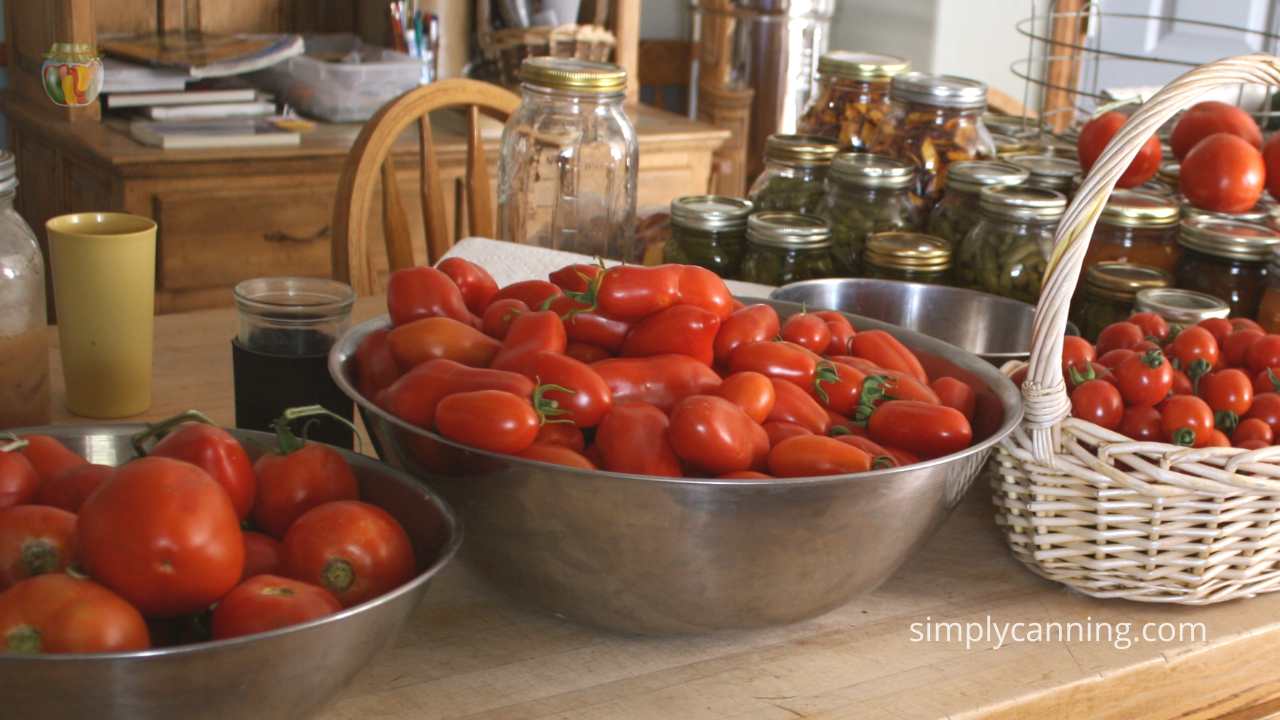
However, for tomato juice you can use any variety of tomatoes you’d like, meaty or juicy. Brandywine is a favorite heirloom tomato that I grow that works well. Some tomatoes will be a purple color and will end up with a bit darker juice. But that is not necessarily a bad thing!
How do you keep your tomato juice or sauce from separating?
Sometimes tomatoes will separate into layers when you are canning. This can happen with tomato juice or sauce. The trick to preventing this is how you cook it first. I”ve got a post here about how to make tomato juice for canning that doesn’t separate.
After you have washed and trimmed up some of your tomatoes removing bad spots, and the stems, cut the tomatoes roughly into quarters. Larger tomatoes can be cut into more pieces and small tomatoes like some paste tomatoes can simply be cut in half.
Just cut enough up to cover the bottom of your pot in a single layer. Heat this to boiling over medium high heat. Use a meat chopper or a potato masher to crush them and help the juices start flowing.
Once that is at a boil, continue to cut up the remaining tomatoes and add them to the pot. Add the pieces slowly enough that the boiling does not stop.
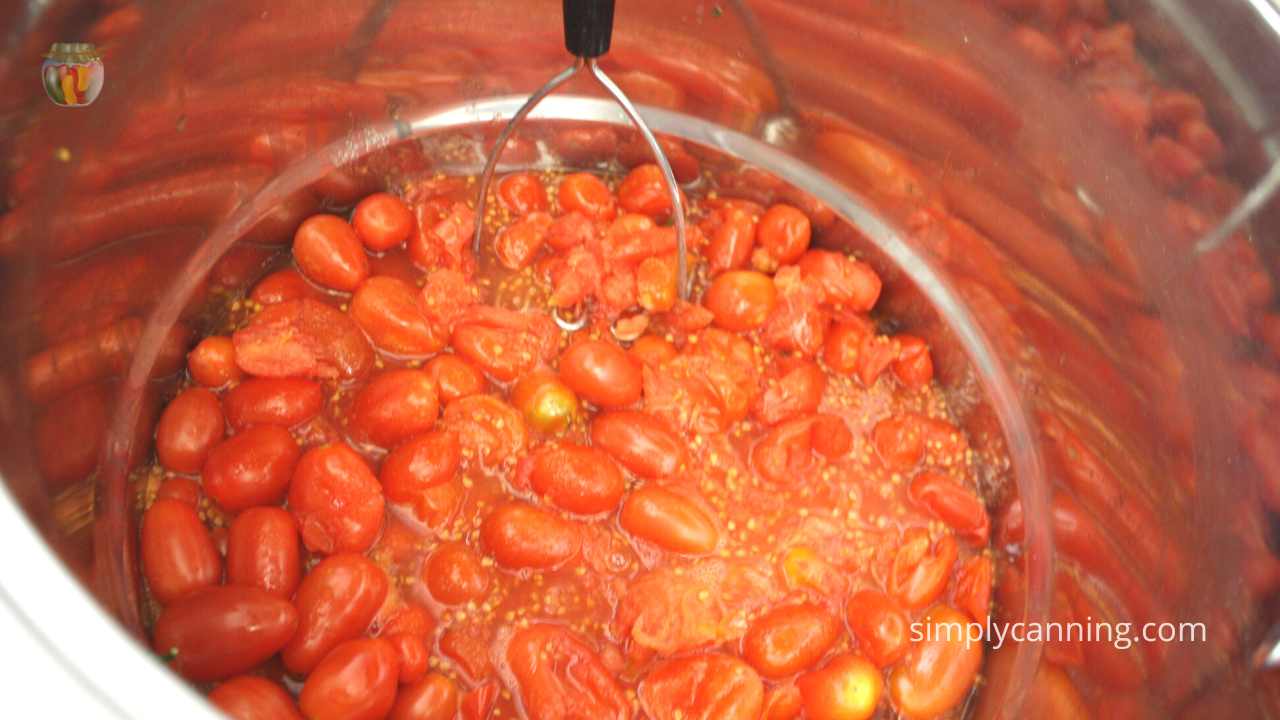
Keeping the tomato mixture boiling reduces separation later. The separation is just a cosmetic issue. If it doesn’t bother you, you can just cut it all up and add it to the pot and bring them to a boil.
Crushing using a potato masher and stirring often will prevent scorching.
After all your tomato quarters are added to the pot and it is boiling reduce the heat and maintain a simmer for 5 minutes.
Do you really have to peel your tomatoes?
Next you’ll need to press your tomatoes through a sieve or food mill to remove the skins and seeds.
Yes you really should peel your tomatoes. The peels are super unappetizing if left in the juice. Skinny little floaters and seeds in the juice is not very appealing. Seeds can leave your juice tasting bitter.
More importantly bacteria count might be higher on the peels. Old methods allowed for just blending or using a food processor to chop. But all current tested methods include peeling and removing the skins. The processing time is appropriate only for juice that has peels and seeds removed.
- I have a Victorio food mill that works wonderfully. It clamps onto a counter. I use this if I’ve got a lot of tomatoes. It’s quick.
- There is also a Foley style food mill that you can set right on your pot and the tomatoes get strained there. A little slower that the counter version above but clean up is much easier.
- You may have an attachment to a different appliance that would work. For example I know my kitchen aide has an attachment available. This is probably even quicker than my Victoria mill.
- And finally I’ve got this little vintage strainer that I picked up second hand. This one is actually my favorite if I’ve just got a few tomatoes to work with. It works pretty slick and is easy cleanup.
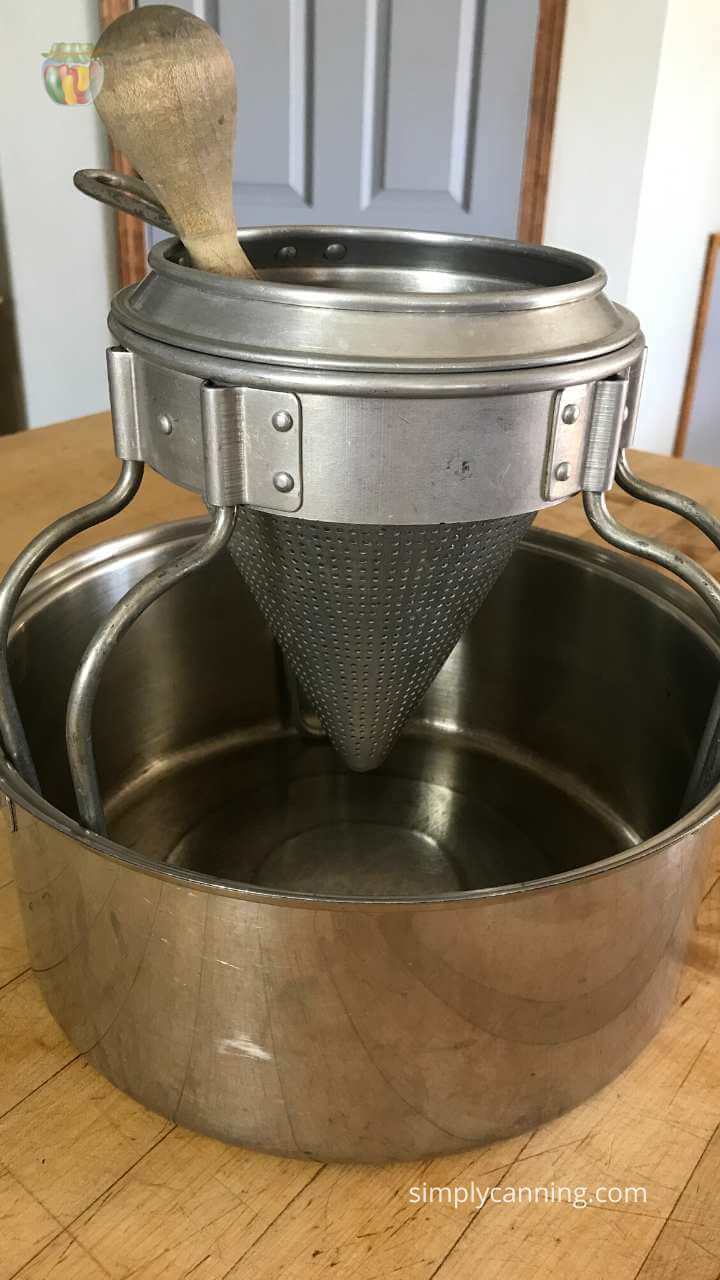
After straining, put the resulting tomato juice back into the pot for heating up again before you fill your canning jars. (Rinse out any remaining skin or seeds from the pot first.)
You now have tomato juice ready for canning. And you’ll need to make a decision.
How do you want to process them?
Remember, tomato juice can be canned in either a water bath or a pressure canner. Either works is tested and safe.
There are details on each canning method here. Choose your processing method and click through for canning directions.
Canning tomato juice in a pressure canner.
How to can tomato juice in a water bath canner.
FAQ
Tomato juice makes a versatile ingredient. You can just drink it as a refreshing cold drink. The taste is fresh and the flavor beats store purchased juicce.
Use it as a base to creamy tomato soup. Add it to dishes like stews, chili or vegetable soup. many recipes use a tomato base. Spanish rice uses tomato juice or sauce. This recipe will work.
No it is not recommended to can tomato juice without a canner. You really do need to process this in a canner.
I’d like to clarify that answer. The important part is processing. You can actually do a water bath in a pot that is not a canner. If the problem is no canner, check this page. Maybe you’ve got what you need to do a water bath.
Yes absolutely! If you really don’t want to use any sort of processing, this tomato juice can be preserved by freezing. Just make the recipe as shown above. Cool, add to freezer containers, label and put in the freezer.
3 pounds of tomatoes will make about a quart of juice. So for 7 quarts of tomato juice you’ll want about 21-23 pounds. I’d get a little extra so you know you have enough to fill your jars. A little extra juice can just go in the fridge if needed.
Printable Recipe
Source, USDA-National Center for Home Food Preservation- accessed 3/17/2023
Pin this to find later!
